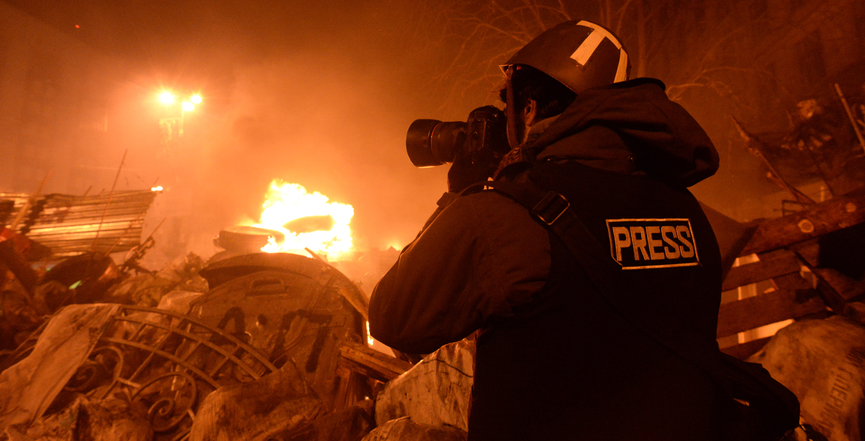Growing tensions between the United States and Iran marked the first two weeks of 2020. News cycles have been dominated by coverage of the attack on the U.S. embassy in Baghdad, the killing of Iranian Major General Qasem Soleimani, Iranian attacks on U.S. military bases, and the horrific downing of a passenger airplane in Tehran, sparking fears about another war igniting in the Middle East. As Canada continues to mourn 57 of its citizens who were among the 176 killed in the plane crash and seek answers from Iran about the tragedy, the issue has remained high on the news agenda of national media. The situation has also affected Iranian-Americans, many of whom have reported being questioned about their political views when entering or leaving the United States.
At this time of global anxiety, journalists everywhere must remember the lessons of the poor and often biased coverage of the Iraq War 16 years ago, and reflect on the ways in which media coverage can either fan the flames of conflict or highlight cool-headed and balanced responses. In this sense, the theory and practice of peace journalism, a radical alternative to what was traditionally perceived as conflict reporting, can offer valuable insights.
Peace journalism argues that the existing media environment, which stresses sensationalism and immediacy, can help exacerbate conflict rather than contribute to its resolution. It also advances that journalists, who play a crucial role in shaping public understanding by providing information about conflict, bear a heavy responsibility for what they write and broadcast. Peace journalism is characterized by balanced reporting at an emotional distance, presenting a broad and multifaceted view of conflict, and rejecting entertainment and partisan interests. In this light, peace journalism calls for coverage that:
- Illuminates structural and cultural violence as it bears upon the lives of people in a conflict zone as part of the explanation for violence;
- Frames conflicts as consisting of many parties, pursuing many goals;
- Makes peace initiatives and potential solutions more visible, whoever suggests them; and
- Equips people to distinguish between stated positions and real goals, especially when judging whether particular forms of intervention are necessary or desirable.
While it is still too early to draw conclusions about whether media coverage and commentary on the ongoing Iran-U.S. tensions have been conflict-sensitive or not, some media outlets have published content that moves in the right direction.
A notable example is an article entitled “Yes, Iranians Can Protest Against Both US Intervention and Their Government,” written by Reza H. Akbari in The Guardian on January 14. In it, the author argues against the “binary view of Iran” that regards the Iranian people as either “easily coerced into participating in pro-regime rallies or as brave souls willing to risk their lives for justice.” This view has dominated U.S. rhetoric around Iranians’ responses to the events of the past two weeks, which have included public mourning and demonstrations against their government. Akbari reminds readers that Iran is not a monolith, and that in a country of 80 million people, people from different backgrounds are bound to hold a range of political opinions. He strongly warns against superficial readings of Iranian society that can be used to justify an escalation of the conflict.
From a peace journalism perspective, this type of reporting and commentary, which seeks to bring nuance and balance into a seemingly black and white situation, is precisely the kind of coverage that can help transform the context in which parties present and formulate their responses. For the sake of peace, let us hope that this approach is adopted by journalists and editors everywhere.
Lorenzo Vargas is a communication for development specialist and researcher on citizens’ media. Lorenzo coordinates WACC Global’s communication for social change program, which supports community media and citizen journalism initiatives in Asia, Latin America, the Caribbean, the Pacific and Africa. WACC Global is an international NGO that promotes communication as a basic human right, essential to people’s dignity and community. It is a member of the ACT Alliance.




